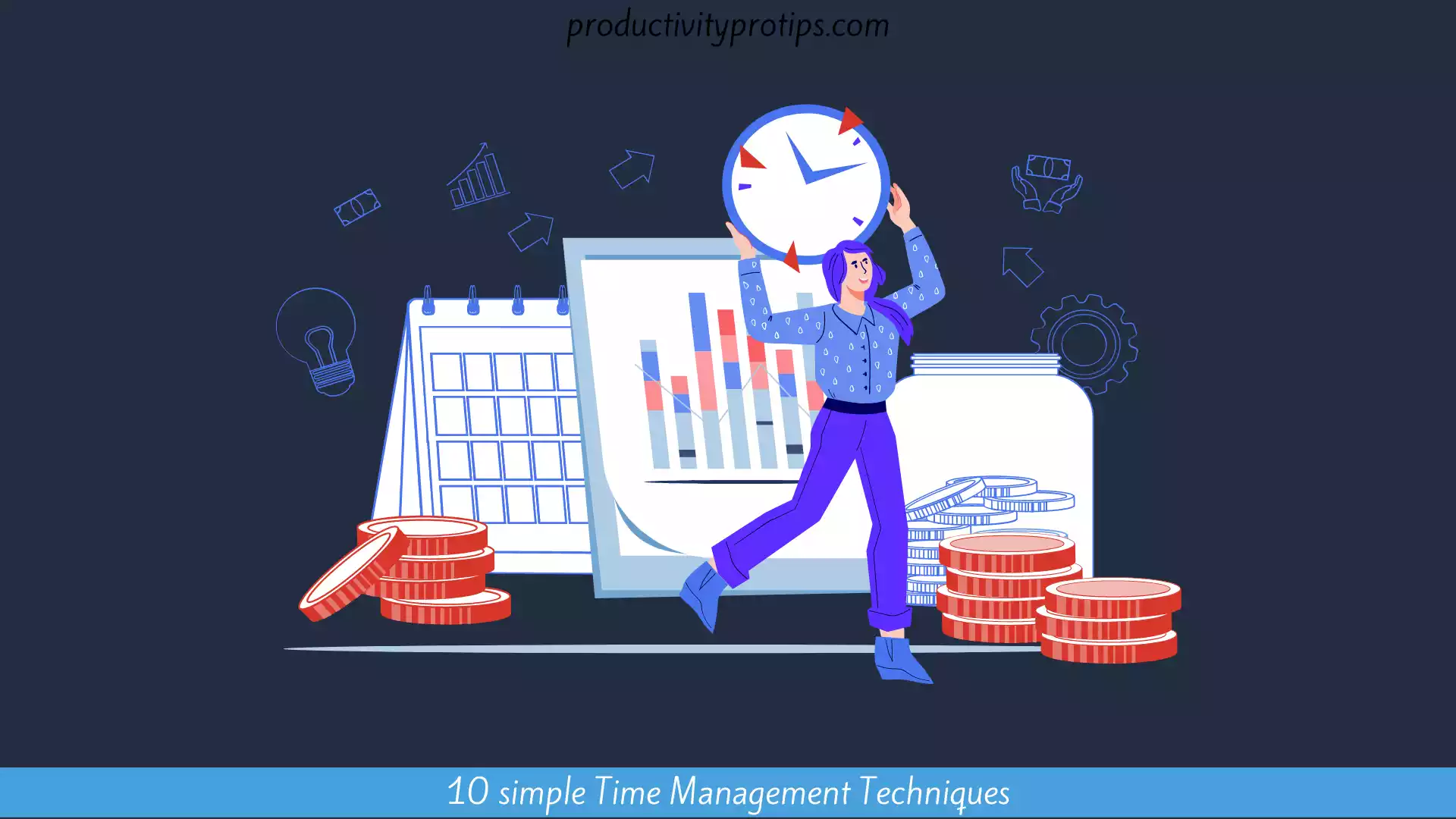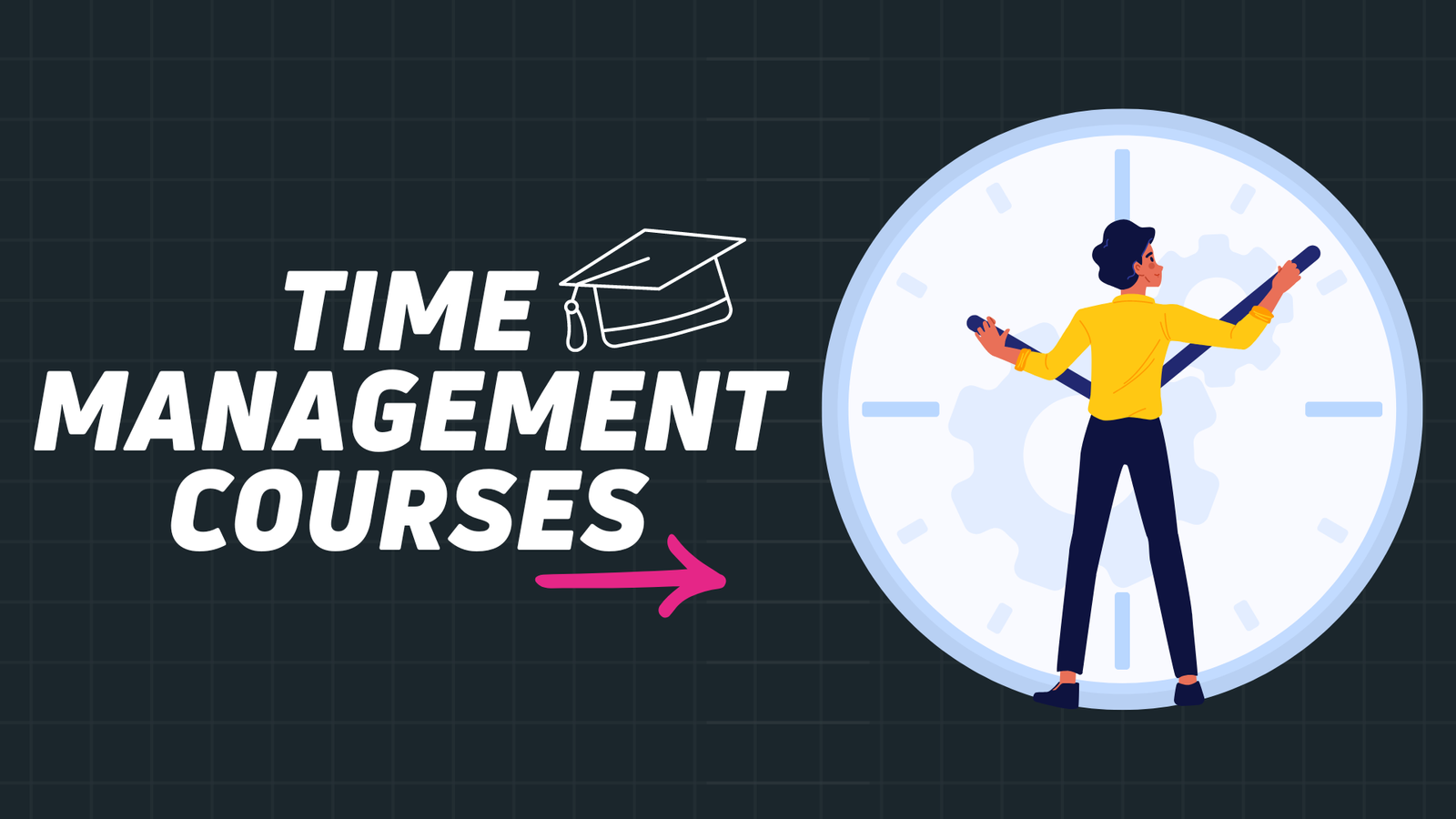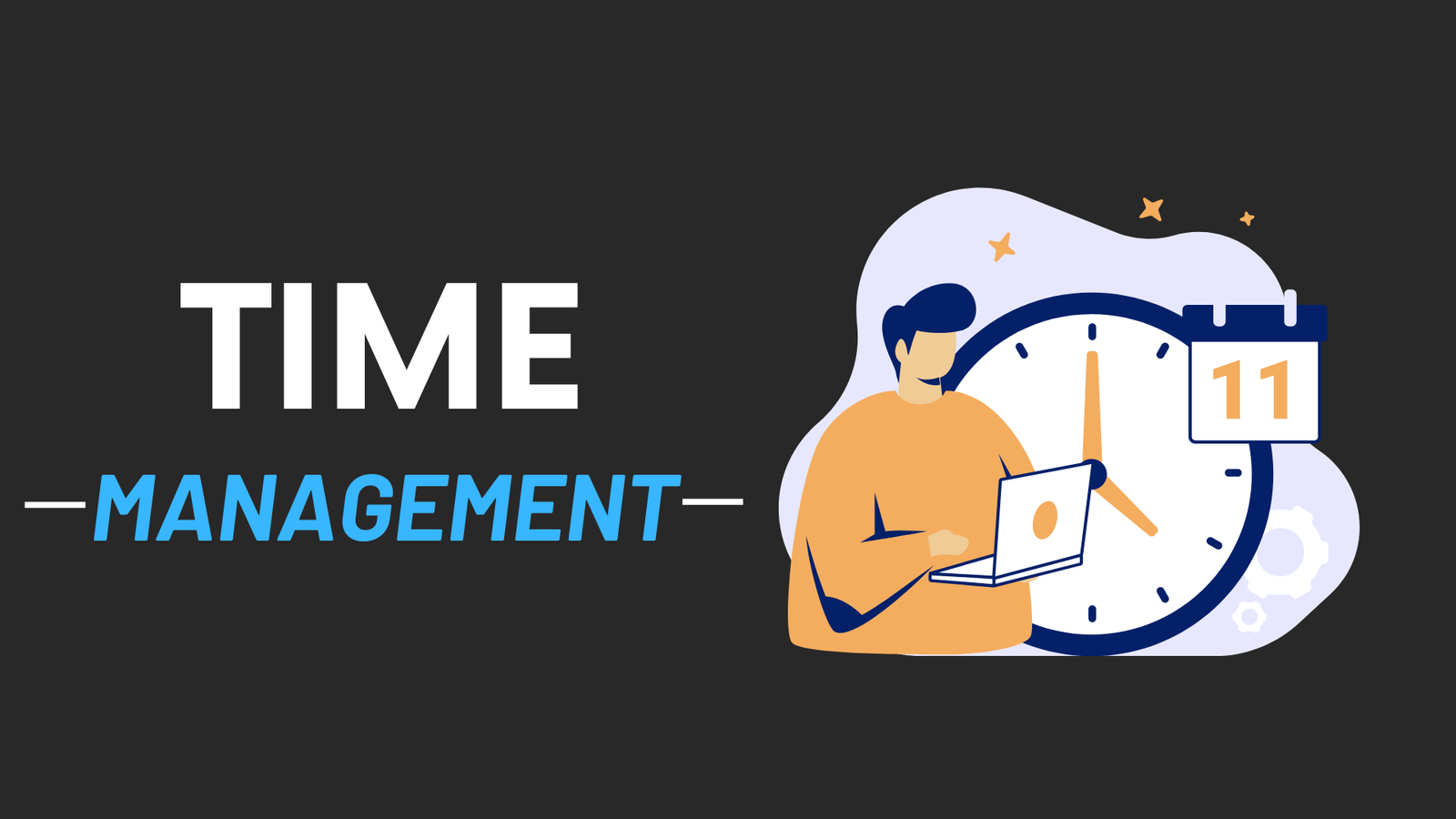Are you finding it difficult to stay productive and manage your time effectively? Time management is a crucial skill that can help boost your productivity and lead to success in both your personal and professional life.
In this article, we will explore 10 simple time management techniques that can help you make the most of your time and increase your productivity. From prioritizing tasks to taking breaks, we’ve got you covered with practical tips and strategies to help you get organized and stay on track. So, let’s dive in and discover how you can boost your productivity with some simple time management techniques.
Time Management Techniques
1. Prioritizing tasks:
Prioritizing tasks is one of the most important aspects of time management. This involves identifying the tasks that are most important and urgent and focusing on them first. To prioritize tasks, one can use tools such as the Eisenhower matrix, which helps to categorize tasks based on their level of importance and urgency.
The Eisenhower matrix is a simple tool that helps to organize tasks into four categories:
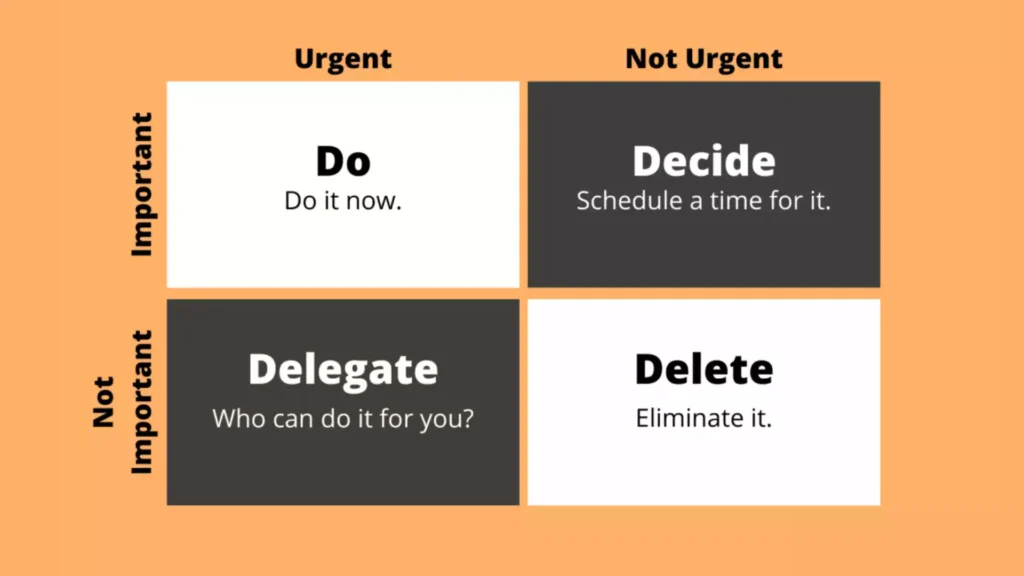
For example, if you have a deadline for an important project at work and a dentist appointment, the project should be considered an urgent and important task, and you should focus on it first. On the other hand, the dentist appointment is important but not urgent task, you can schedule it later.
Another example, if you got an email from your boss asking you to complete a task by the end of the day and an invitation from a friend to watch a movie, the task from your boss should be considered as an urgent but not important task, and you can delegate it to someone else. On the other hand, if the invitation from your friend is not urgent and not an important task, you can eliminate it.
2. Setting goals
Setting specific, measurable, achievable, relevant, and time-bound (SMART) goals can help manage time effectively. This involves setting clear and realistic goals that are achievable within a specific timeframe. These goals can be broken down into smaller tasks to make them more manageable.
For example, let’s say you want to increase your sales by 20% within the next quarter. A SMART goal for this would be “increase sales by 20% within the next quarter by implementing a new marketing strategy and increasing outreach to potential customers.” This goal is specific (increase sales by 20%), measurable (20% increase), achievable (through implementing a new marketing strategy and increasing outreach), relevant (to the overall success of the business), and time-bound (within the next quarter).
Another example, let’s say you want to lose weight, A SMART goal for this would be “lose 10 pounds within the next three months by exercising for at least 30 minutes a day, and following a healthy diet.” This goal is specific (lose 10 pounds), measurable (10 pounds), achievable (through exercising and following a healthy diet), relevant (to your health), and time-bound (within the next three months).
By setting SMART goals, you can stay focused on what you want to achieve and create a plan of action for how to achieve it. This can help you to stay motivated and on track, and ensure that you are using your time effectively to reach your goals.
3. Using a to-do list:
Creating a to-do list is an effective way to manage tasks and stay organized. A to-do list is a simple but powerful tool that can help you to prioritize tasks, keep track of progress, and avoid forgetting important tasks.

When creating a to-do list, it is important to keep it simple and easy to read. This can be done by using a notebook, a sticky note, or a digital tool such as an app or a spreadsheet. It is important to use bullet points and to keep the list short and concise.
To make the most of your to-do list, it is important to prioritize tasks and start with the most important and urgent tasks first. This can be done by using a system such as the Eisenhower matrix, or by using symbols such as stars or exclamation marks to indicate the level of importance.
For example, you can create a to-do list for the day and prioritize the tasks based on their level of importance and urgency, you can write the most important and urgent task at the top of the list and the least important and urgent task at the bottom of the list.
Additionally, it is important to review your to-do list regularly and adjust it as needed. This can be done by crossing off completed tasks, rescheduling tasks that were not completed, and adding new tasks as they arise.
Overall, using a to-do list can help you to stay organized and focused, and ensure that you are using your time effectively to complete important tasks.
4. Eliminating distractions
Distractions are one of the biggest obstacles to productivity and can cause you to lose focus and waste valuable time. To manage time effectively, it is important to identify and eliminate distractions in the workplace.
Examples of common distractions include social media, email, phone calls, and interruptions from colleagues. To eliminate these distractions, it is important to set boundaries and create a conducive work environment.
For example, you can turn off notifications on your phone and social media accounts during work hours or put your phone on airplane mode while working. Additionally, you can use noise-canceling headphones to block out external noise, or use apps that block distracting websites.
Another way to eliminate distractions is to create a schedule for checking and responding to emails, rather than constantly checking them throughout the day. This can help to minimize interruptions and increase focus on more important tasks.
Moreover, setting up a “Do Not Disturb” mode on your computer can also be very helpful in eliminating distractions. This feature allows you to mute notifications, email, and other interruptions for a set period of time, allowing you to focus on the task at hand.
Overall, eliminating distractions can help you to stay focused and use your time more effectively, leading to increased productivity.
5. Time blocking
Time blocking is a technique that involves scheduling time in blocks to increase focus and productivity. This involves breaking your day into smaller chunks of time and allocating specific tasks to each block.
For example, you can schedule your day by allocating specific tasks during the most productive hours of your day. For instance, you can schedule your most important and complex task during the morning when your energy and focus are at the highest level.
Additionally, you can use time blocking to schedule regular breaks throughout the day. This can help to prevent burnout and increase productivity by giving your mind and body a chance to rest and recharge.
To implement time blocking, you can use a calendar or a scheduling app to plan out your day. Be sure to include time for breaks, meetings, and other important events, as well as blocks of time for focused work. You can also use a timer to help you stay on track and ensure that you are using your time effectively.
Another way to implement time blocking is to use the Pomodoro technique, which is a time management method that breaks down work into intervals, traditionally 25 minutes in length, separated by short breaks. This technique helps to increase focus and productivity by working in shorter bursts with regular breaks.
Overall, time blocking can help you to stay focused and use your time more effectively, leading to increased productivity. By allocating specific tasks to specific blocks of time, you can increase your focus and get more done in less time.
6. Delegating tasks
Delegating tasks is an important aspect of time management as it allows you to focus on the most important and urgent tasks while also allowing others to take on responsibilities and develop their own skills.
Effective delegation involves identifying tasks that can be completed by others, assigning them to the right person, and providing clear instructions and guidelines. It also involves providing appropriate support and follow-up to ensure that the task is completed to the required standard.
For example, in an office environment, you can delegate tasks such as scheduling meetings, responding to emails, or organizing paperwork to a junior team member or an administrative assistant.
Another example, is in a business, you can delegate tasks such as bookkeeping or inventory management to a specialist or a virtual assistant.
Additionally, delegating tasks can help to build a strong team and foster a culture of trust and accountability. By giving team members the opportunity to take on new responsibilities and develop their own skills, you can help to create a more productive and engaged workforce.
However, it is important to keep in mind that delegation should be done strategically, and not all tasks can be delegated. It is essential to evaluate whether delegating a task is viable and if it will bring more benefits than drawbacks.
Overall, delegating tasks can help you to use your time more effectively by allowing you to focus on the most important and urgent tasks. It can also help to build a strong team and foster a culture of trust and accountability.
7. Managing email
Email can be a major time-waster and a source of distraction if not managed effectively. To manage email more effectively, it’s important to establish a set of rules and guidelines for how and when you will check and respond to emails.
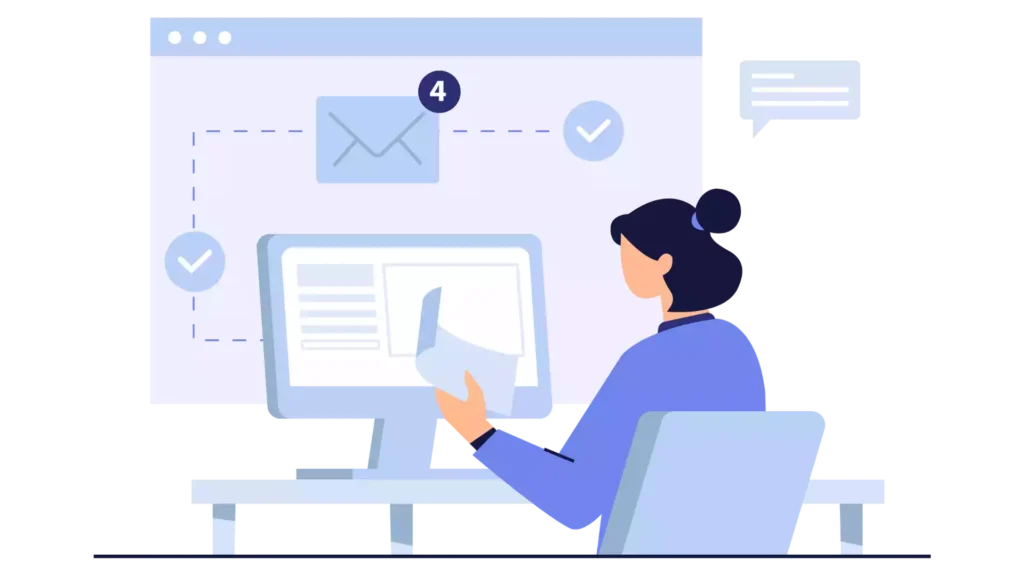
For example, you can set specific times during the day to check and respond to emails, such as first thing in the morning, at lunchtime, and before you leave for the day. This can help to minimize interruptions and increase focus on more important tasks.
Another strategy is to use filters or labels to prioritize messages. This can help you to quickly identify the most important and urgent messages, and respond to them first.
You can also use the principle of “touch it once” which means that when you open an email, you should take the necessary action, whether that be replying, forwarding, or deleting, and then move on. This can help to reduce the amount of time spent on email and increase productivity.
Additionally, you can use tools such as email templates or canned responses to quickly respond to common questions or messages, allowing you to save time and be more efficient.
It’s also important to remember to unsubscribe from mailing lists or newsletters that you no longer find useful or relevant. This can help to reduce the number of emails you receive and make it easier to manage the messages that are important.
Overall, managing email effectively can help you to use your time more efficiently and reduce the amount of time spent on email, leading to increased productivity.
8. Managing meetings:
Meetings are a necessary part of business and can be an effective way to collaborate and make decisions. However, if not managed effectively, meetings can be a major time-waster and a source of frustration.
One strategy for managing meetings is to set clear agendas and stick to them. This can help to ensure that the meeting stays on track and that all relevant topics are covered. It’s also important to invite only the necessary attendees and to keep the meeting as short as possible.
Another strategy is to use tools such as video conferencing or instant messaging to communicate with team members instead of scheduling face-to-face meetings. This can help to save time and increase productivity.
Additionally, it’s important to establish ground rules for meetings, such as keeping the meeting on schedule, avoiding side conversations, and refraining from using electronic devices during the meeting.
Furthermore, you can use the concept of a “standing meeting” which is a meeting that is held while standing, this concept aims to keep the meeting short and to the point, and avoid prolonged meetings.
It’s also important to evaluate the effectiveness of meetings and to make adjustments as needed. This can involve assessing the outcome of the meeting, taking note of any areas that need improvement, and implementing changes for future meetings.
Overall, managing meetings effectively can help you to use your time more efficiently, and increase productivity by keeping meetings short and focused, and ensuring that all relevant topics are covered.
9. Taking breaks:
Taking breaks is an important aspect of time management as it allows you to rest and recharge, and can help to increase productivity and focus.

One strategy for taking breaks is to schedule regular breaks throughout the day, such as a short break every hour or a longer break in the middle of the day. During these breaks, you can do something that you enjoy, such as reading a book, going for a walk, or listening to music.
Additionally, it’s important to use your breaks to disconnect from work and to engage in activities that are different from work, this can help to reduce stress and increase creativity.
Furthermore, you can use your break time to do a physical activity, such as stretching, yoga, or going for a walk, this can help to increase your energy and reduce stress.
It’s also important to remember that taking breaks is not wasting time, but an essential part of time management, it will help you to recharge and be more productive in the long run.
Overall, taking breaks is an important aspect of time management as it allows you to rest and recharge, and can help to increase productivity and focus. By scheduling regular breaks throughout the day and engaging in activities that are different from work, you can reduce stress and increase creativity.
10. Reflecting and evaluating
Reflecting on how time was spent and evaluating the effectiveness of time management techniques is an essential step in improving productivity.
One strategy for reflecting and evaluating is to keep a time log or a diary, where you can record how you spend your time and identify patterns or areas for improvement. This can be done by noting down the tasks you complete, the time it took to complete them, and any interruptions or distractions that occurred.
Another strategy is to conduct regular self-evaluations, where you can reflect on your progress and identify areas for improvement. This can involve assessing your goals, evaluating your time management techniques, and reflecting on your successes and challenges.
Additionally, it’s important to seek feedback from others, this can be done by asking for feedback from colleagues, supervisors, or clients, this can help to identify areas for improvement and to know what you are doing right.
Furthermore, you can use tools such as a productivity tracker or an app to track your progress and evaluate the effectiveness of your time management techniques.
Overall, reflecting on how time was spent and evaluating the effectiveness of time management techniques is an essential step in improving productivity. By keeping a time log, conducting regular self-evaluations, seeking feedback from others, and using tools to track your progress, you can identify areas for improvement and make adjustments as needed.
conclusion
In conclusion, time management is a crucial skill that can help boost productivity and achieve success in both personal and professional life. The 10 simple time management techniques discussed in this article can help you to make the most of your time and increase your productivity.
From prioritizing tasks to taking breaks, these tips and strategies can help you get organized and stay on track. Remember that time management is a continuous process, it’s important to reflect on how time was spent and to evaluate the effectiveness of time management techniques to improve productivity.
By implementing these techniques, you can use your time more effectively, increase productivity and achieve your goals.
